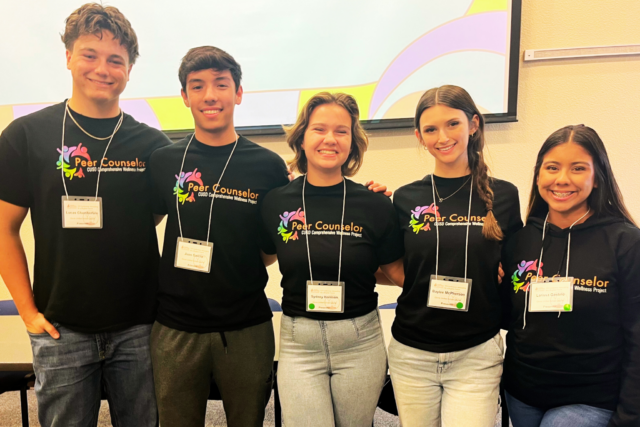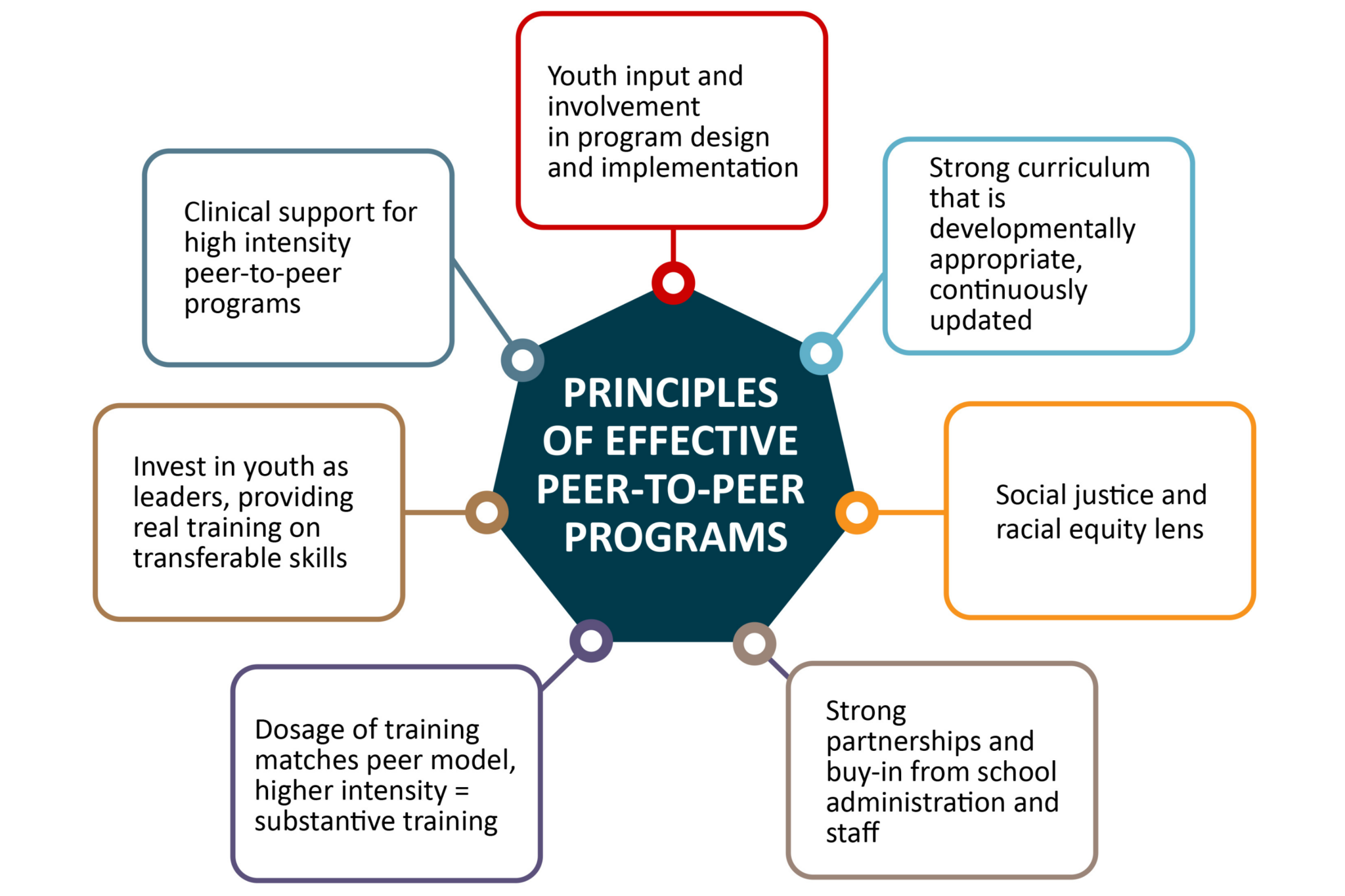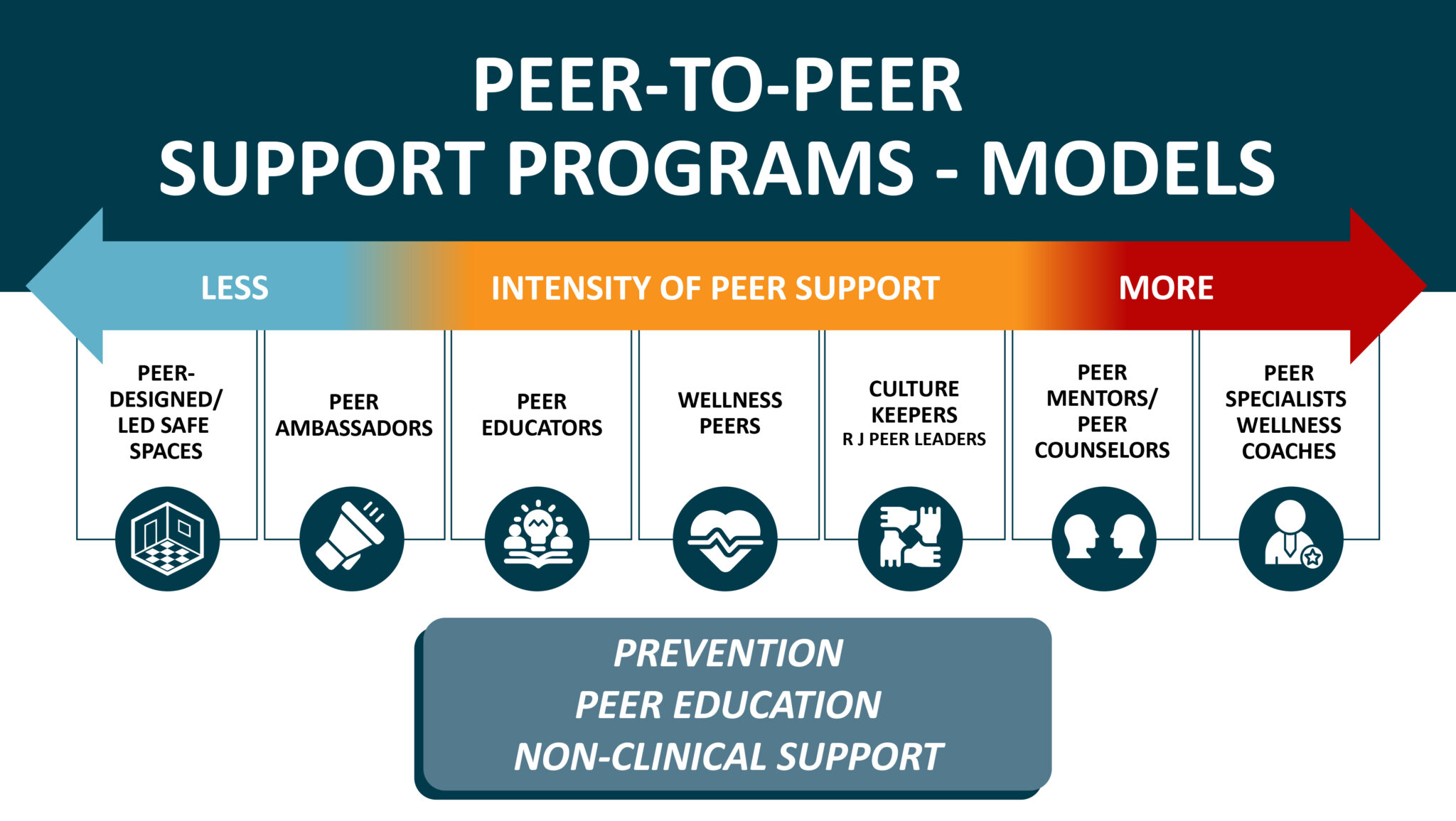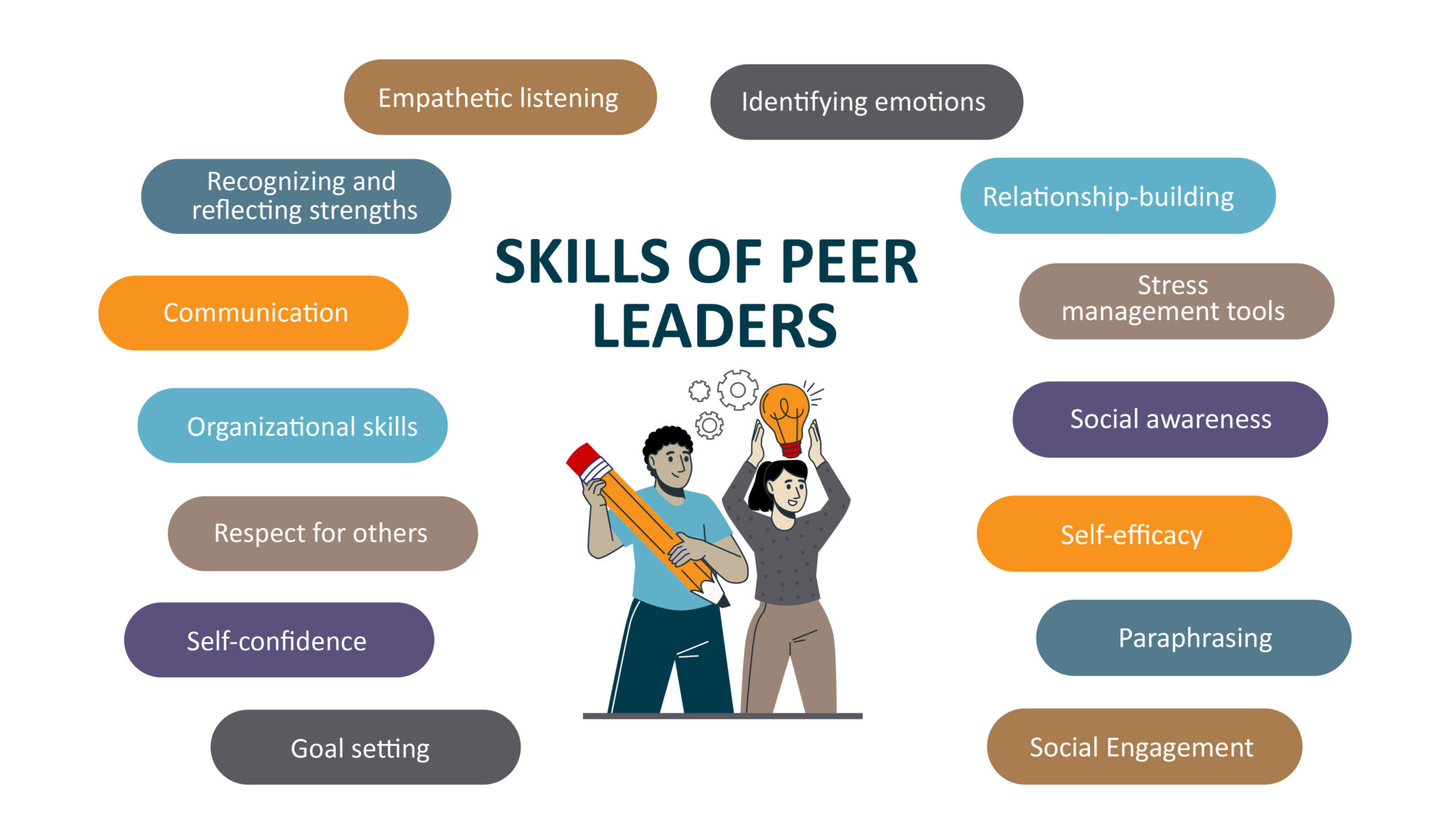Students Helping Students
Peer-to-peer mental health support can be an effective strategy for supporting student behavioral health.
There is growing interest in bringing peer-to-peer mental health support programs to schools, and peer programs are part of a larger shift in the approach to school mental health that centers prevention, early intervention, cultural relevance and social-emotional skill development. Peer programs can complement and strengthen traditional school mental health programs.
As youth move through adolescence, they increasingly turn to their peers for support, advice, and to talk through difficult experiences.
Peer-to-peer support models create supportive relationships between youth, and can be particularly helpful for youth who might be resistant to traditional behavioral health models.
Peer-to-peer programs can equip youth with essential accurate information on behavioral health, communication skills to talk with and support one another, and connections to mental health resources and trusted adults.
Why Peer-to-Peer Mental Health Supports?
- Youth want to talk to other youth
- Peer relationships are highly valued by adolescents
- There is a critical need for more mental health supports in schools
- Peer programs can increase equity in mental health care access and diversity in mental health workforce
- Peer programs can have a double impact – benefiting the peer mentor and peer mentee
- Peer programs fit into the MTSS as Tier 1 and Tier 2 interventions
Starting a Peer-to-Peer Program
Peer-to-peer programs can be implemented as part of a school’s comprehensive school mental health approach to support student well-being.
In considering starting a peer-to-peer program, it is essential to take the time to evaluate your particular school’s unique needs, strengths, resources, student and staff composition to develop an effective program.
Questions to Explore
- Why are you starting a peer-to-peer program?
- What need are you addressing?
- What data can help you determine what model is the best fit?
- Who can partner with you?
- How will you know it’s working? What does success look like?
- Do you have school administrative buy-in? If not, how can you build it?
- Do program coordinator(s) have adequate time and support?
Principles of Effective Peer to Peer Programs
There are many examples of effective school-based peer-to-peer programs that equip students with skills and knowledge while giving them opportunities to provide support to their peers. These programs shared many of the following principles in their design and implementation.
- Clinical support for high intensity peer-to-peer programs
- Youth input and involvement in program design, builds on youth development principles ladder
- Strong curriculum that is developmentally appropriate, continuously updated
- Social justice and racial equity lens
- Strong partnerships and buy-in from school administration and staff
- Dosage of training matches peer work model, higher intensity = substantive training
- Invest in youth as leaders, providing real training on transferable skills
Peer-to-Peer Mental Health Support Models
Continuum of Peer-to-Peer Support Programs
There are a number of effective models of school-based peer-to-peer support, and it is important to determine what model is the best fit for a specific school community. Some models can be initiated fairly easily with interested students and an adult advisor, requiring little to no funding. Other models require a much higher level or staff support, oversight, and incorporation into the school master calendar. Similarly, more intensive peer-to-peer models, such as peer counseling, require higher levels of training for both the peers and the adult leader.
Models to Consider
Peer-Designed/Led Safe Spaces
Engaging students to envision and create safe wellness spaces for students on campus can be a starting place for building a peer-to-peer culture. Students can poll their peers, facilitate focus groups, and engage with adult allies to create and lead these spaces.
Wellness Ambassadors
An accessible entry point into peer-to-peer support is a student-led club where youth are trained in mental health literacy, stigma reduction, and community engagement. Organizations such as NAMI on Campus, Bring Change to Mind, and Sources of Strength offer resources and support to schools who want to start a club. See links to their websites below for specific information about each.
Peer Health Educators
Peer health education can be an effective model for disseminating health information that is important to youth in a way that youth can best hear it – from their peers. Peer health educators are trained to provide school-wide trainings through classroom presentations, assemblies, lunch time activities etc. on a range of health topics. Social media platforms like TikTok and Instagram are often used by peer health educators to creatively reach their peers with accurate, meaningful mental health information.
Wellness Peers
Wellness Peers are youth recruited to participate in the design and implementation of Wellness Centers, and serve both as support for students who use the center as well as ambassadors in the school community. Young people are often the best ambassadors for a SBHC or Wellness Center. They have the trust of their peers and can speak authentically about the vibe, the services, and adult staff. Wellness Peers help students who are using the Wellness Center sign-in, understand the rules, and connect them to some of the self-regulating, calming stations.
Restorative Justice Peer Leaders/Culture Keepers
Restorative Justice Peer Leaders are trained to support their school community by leading restorative justice circles that build, repair and restore relationships. Culture Keepers is a model that trains peers to lead mindfulness, meditation and restorative practices and facilitate peer conflict mediations. Both models can offer a powerful alternative to more traditional disciplinary approaches when students act out or conflict arises.
Peer Counseling/Peer Mentoring
Peer Counseling and Mentoring Peer models are high-intensity peer programs that train youth in very specific communication and interpersonal skills who will then use those skills in a systematic and well-thought out way to provide services to each other. Often, these programs are organized through an elective class taught by a teacher with mental health training and with access to clinical support. Peers will offer one-on-support to other students, and be held to high standards. Training includes lots of opportunities for practice and role plays, training on documentation for all peer sessions, and identification of red flags that require referral.
Peer Specialists/Certified Wellness Coaches
Peer Specialists are paraprofessionals or young adults who have experienced similar challenges and completed specialized training to learn how to use their experience to support other youth. Peer specialists offer a range of activities and interactions focussed on promoting connection, inspiring hope, and supporting youth to set their own goals. Wellness Coaches are a new workforce program being rolled out by the state as part of the Children and Youth Behavioral Health Initiative (CYBHI), aimed at building a more diverse behavioral health workforce in schools.
Recommendations for District Leaders
- Invest in training and technical assistance for schools and partners to start peer programs.
- Implement peer programs as part of every school’s Tier 1 intervention strategy. All children and youth, regardless of their need for mental health support, can benefit from increased mental health literacy and positive peer relationships.
- Fund partnerships and programs to scale peer support programs.
- Support research and data collection efforts to better access more data on the effectiveness of peer to peer programs.
- Commit to co-create programs with youth, and offering spaces and opportunities to uplift and support youth centered and led solutions.







